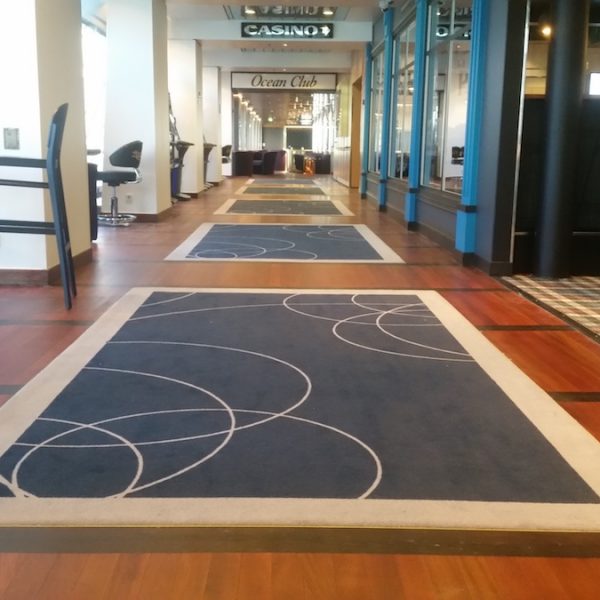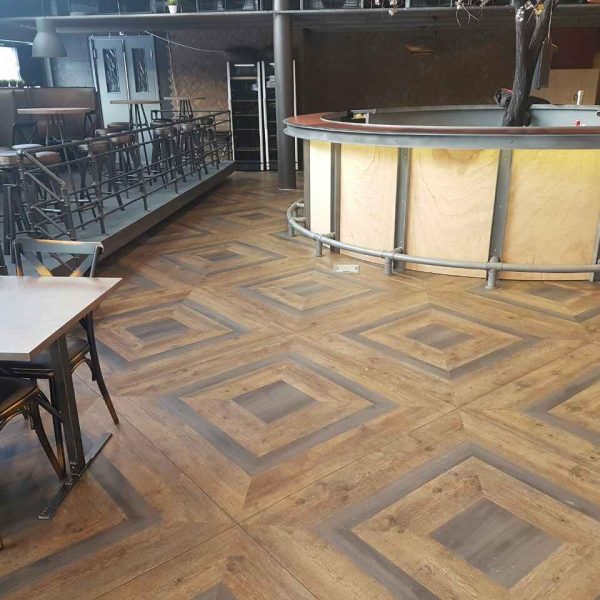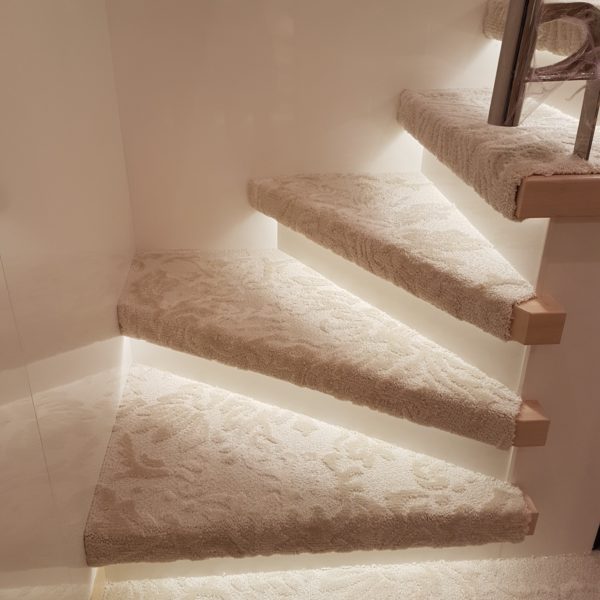Ideally, the floor covering of a new building should be thought about already during the design process to avoid the additional costs of installing the material later. At the same time, there is no floor that could not be repaired later, says Hannes Olop, the head of one of Estonia’s best-known flooring sales and installation company Loyatic OÜ.
The choice of floor covering in a new house or replacement in an existing building depends on the customer’s desired interior and ambience, which is desired. In particular, however, one should think about the purpose and purpose of the premises and the resulting floor resistance and soundproofing, which helps to make the first choice. In addition to the standard solutions, it is possible to obtain different coatings and all kinds of special solutions in a very wide variation according to each taste.
Herringbone in a private house. Photo: Loyatic OÜ
For public spaces, usually, flooring manufacturers have a special series of industrial materials that have a particularly high wear resistance. The rule of thumb is, however, that when installing any cover, you must follow the installation instructions or previous experience, otherwise a poorly constructed and unattended floor may be needed that may need to be renewed after a year.
Hannes Olop, Head of Loyatic OÜ: “These floor coverings that were in use 10-15 years ago are by now the past. They have changed their appearance, ingredients, installation methods and durability. ”
When installing floor coverings in public spaces, everything starts from the substrate: if the substrate is dry, strong and smooth, the floor will last for years after proper maintenance. Poorly installed and smoothed concrete requires an additional leveling of the self-illuminating mixture to provide the ideal end result for most floor coverings. The same applies to a sloppy and unevenly cast floor, which may later become fatal and require additional costs for the customer. Make sure that the floor is laid on a properly sealed substrate. However, there is no floor that cannot be restored with modern technologies.
Which material is suitable for where?
The choice of material depends on the space required: if a strong coating is desired, it should be selected from the industrial range of coatings. Certainly, the flooring is the strongest concrete floor and then the wooden floor, but it is also possible to install different coatings on the wooden floor if the surface is covered with a self-leveling mixture. Speaking of more modern floor coverings, PVC, linoleum, LVT materials, carpets, and parquet are the most popular flooring materials.
Waterproof and long-lasting PVC is suitable for heavy-duty corridors and industrial buildings where material durability and wear resistance are important. This material can also be installed in wet rooms, such as kitchenettes and bathrooms, where water density is important, but in this case the material should be lifted on the wall by approx. Various patterns and stripes can be made on the PVC floor, giving the floor liveliness, for example, Kergu kindergarten, where the flowers on various PVC shades were cut to the floor. There are also 3D patterns that provide spatial and novel effects and exciting results.
Linoleum is an environmentally friendly flooring that is preferred for use in school buildings, kindergartens and nursing homes with a strong emphasis on health and a pleasant atmosphere. The lightly maintained linoleum with its high quality and innovative design keeps the floors beautiful.
LVT (Luxury Vinyl Tiles – in English) or design vinyl is usually installed as modules or flags, and this material imitates wood floors, ceramic tiles and stone tiles very well. As their selection is very large and with a wide variety of patterns, the LVT vinyl tiles are perfect for flooring in commercial and service areas as well as in homes.
The range of carpets is very diverse, ranging from colors and materials to various installation options – carpets are sold as tiles and rolls. Mostly, carpets are suitable for offices where it is important to have a comfortable indoor climate and noise resistance. The materials are extremely durable and easy to clean natural and environmentally-friendly natural materials, from coconut and bamboo to woolen, as desired. The advantage of plate pads is that they are easily interchangeable when it comes to occasionally renovating flooring in some places with different wear and tear.
Parquet has won the hearts of those who appreciate naturalness, cosiness, and peculiarity, because no wood or wood-covered parquet board is 100% identical to the other. Parquet can be installed both glued and floating, and it is especially suitable for home offices.
There are other flooring materials such as cork, ceramic tile, rubber and plastic. Loyatic has experience in installing all of them and if you feel that you are making the right choice in front of a problem or have doubts about different materials, you are welcome to ask our specialists for advice. The most exciting and eye-catching flooring depends on the viewer, but the worst floor is a properly chosen and properly maintained floor!
Technology is constantly changing
These floor coverings that were in use 10-15 years ago are by now the past. Their appearance, ingredients, installation methods and durability have changed. Loyatic is engaged in the installation of various floor coverings, with a constantly trained professional flooring team, providing customers with modern flooring materials that meet high quality standards and install them according to the manufacturer’s requirements. As flooring materials and technology are constantly changing, it is important that the seller and installer are aware of the choice of different manufacturers. Loyatic works with major manufacturers such as Grabo, Tarkett, Forbo and Amtico.
Because each item is unique and different, it is important that the flooring vendor and installer can provide customized solutions alongside more traditional and simpler standard solutions, and have a sufficiently large and satisfied customer base. Loyatic offers its services from private individuals to large companies such as Tallink, Nordecon, KRC, Tartu Ehitus, Oma Ehitus and many hotel chains.



